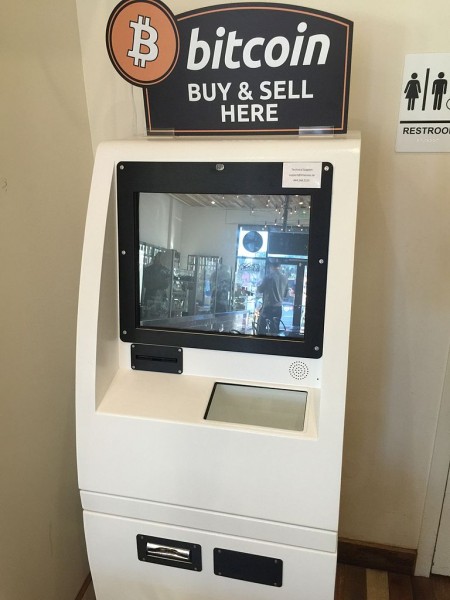 The development of open-source software and blockchain technology has enabled people to ‘hack’ capitalism – to present and provide alternatives to traditional modes of production, consumption and exchange. This has enabled more effective markets in second-hand products, new environmentally-friendly technologies and by-products that otherwise would have been negative externalities. Cryptocurrencies are increasingly providing the medium of exchange in such markets.
The development of open-source software and blockchain technology has enabled people to ‘hack’ capitalism – to present and provide alternatives to traditional modes of production, consumption and exchange. This has enabled more effective markets in second-hand products, new environmentally-friendly technologies and by-products that otherwise would have been negative externalities. Cryptocurrencies are increasingly providing the medium of exchange in such markets.
In a BBC podcast, Hacking Capitalism, Leo Johnson, head of PwC’s Disruption Practice and younger brother of Boris Johnson, argues that various changes to the way capitalism operates can make it much more effective in improving the lives of everyone, including those left behind in the current world. The changes can help address the failings of capitalism, such as climate change, environmental destruction, poverty and inequality, corruption, a reinforcement of economic and political power and the lack of general access to capital. And these changes are already taking place around the world and could lead to a new ‘golden age’ for capitalism.
 The changes are built on new attitudes and new technologies. New attitudes include regarding nature and the land as living resources that need respect. This would involve moving away from monocultures and deforestation and, with appropriate technologies (old and new), could lead to greater output, greater equality within agriculture and increased carbon absorption. The podcast gives examples from the developing and developed world of successful moves towards smaller-scale and more diversified agriculture that are much more sustainable. The rise in farmers’ markets provides an important mechanism to drive both demand and supply.
The changes are built on new attitudes and new technologies. New attitudes include regarding nature and the land as living resources that need respect. This would involve moving away from monocultures and deforestation and, with appropriate technologies (old and new), could lead to greater output, greater equality within agriculture and increased carbon absorption. The podcast gives examples from the developing and developed world of successful moves towards smaller-scale and more diversified agriculture that are much more sustainable. The rise in farmers’ markets provides an important mechanism to drive both demand and supply.
In the current model of capitalism there are many barriers to prevent the poor from benefiting from the system. As the podcast states, there are some 2 billion people across the world with no access to finance, 2.6 billion without access to sanitation, 1.2 billion without access to power – a set of barriers that stops capitalism from unlocking the skills and productivity of the many.
 These problems were made worse by the response to the financial crisis of 2007–8, when governments chose to save the existing model of capitalism by propping up financial markets through quantitative easing, which massively inflated asset prices and aggravated the problem of inequality. They missed the opportunity of creating money to invest in alternative technologies and infrastructure.
These problems were made worse by the response to the financial crisis of 2007–8, when governments chose to save the existing model of capitalism by propping up financial markets through quantitative easing, which massively inflated asset prices and aggravated the problem of inequality. They missed the opportunity of creating money to invest in alternative technologies and infrastructure.
New technology is the key to developing this new fairer, more sustainable model of capitalism. Such technologies could be developed (and are being in many cases) by co-operative, open-source methods. Many people, through these methods, could contribute to the development of products and their adaptation to meet different needs. The barriers of intellectual property rights are by-passed.
New technologies that allow easy rental or sharing of equipment (such as tractors) by poor farmers can transform lives and massively increase productivity. So too can the development of cryptocurrencies to allow access to finance for small farmers and businesses. This is particularly important in countries where access to traditional finance is restricted and/or where the currency is not stable with high inflation rates.
Blockchain technology can also help to drive second-hand markets by providing greater transparency and thereby cut waste. Manufacturers could take a stake in such markets through a process of certification or transfer.
 A final hack is one that can directly tackle the problem of externalities – one of the greatest weaknesses of conventional capitalism. New technologies can support ways of rewarding people for reducing external costs, such as paying indigenous people for protecting the land or forests. Carbon markets have been developed in recent years. Perhaps the best example is the European Emissions Trading Scheme (EMS). But so far they have been developed in isolation. If the revenues generated could go directly to those involved in environmental protection, this would help further to internalise the externalities. The podcasts gives an example of a technology used in the Amazon to identify the environmental benefits of protecting rain forests that can then be used to allow reliable payments to the indigenous people though blockchain currencies.
A final hack is one that can directly tackle the problem of externalities – one of the greatest weaknesses of conventional capitalism. New technologies can support ways of rewarding people for reducing external costs, such as paying indigenous people for protecting the land or forests. Carbon markets have been developed in recent years. Perhaps the best example is the European Emissions Trading Scheme (EMS). But so far they have been developed in isolation. If the revenues generated could go directly to those involved in environmental protection, this would help further to internalise the externalities. The podcasts gives an example of a technology used in the Amazon to identify the environmental benefits of protecting rain forests that can then be used to allow reliable payments to the indigenous people though blockchain currencies.
Podcast
Questions
- What are the main reasons why capitalism has led to such great inequality?
- What do you understand by ‘hacking’ capitalism?
- How is open-source software relevant to the development of technology that can have broad benefits across society?
- Does the current model of capitalism encourage a self-centred approach to life?
- How might blockchain technology help in the development of a more inclusive and fairer form of capitalism?
- How might farmers’ co-operatives encourage rural development?
- What are the political obstacles to the developments considered in the podcast?
What do tulips, nickel mining in Australia, South Seas trading, Beanie Babies and cryptocurrencies have in common? The answer is that they have all been the subject of speculative bubbles. In the first four cases the bubble burst. A question currently being asked is whether it will happen to bitcoin.
Bitcoin
 Bitcoin was created in 2009 by an unknown person, or people, using the alias Satoshi Nakamoto. It is a digital currency in the form of a line of computer code. Bitcoins are like ‘electronic cash’ which can be held or used for transactions, with holdings and transactions heavily encrypted for security – hence it is a form of ‘crytocurrency’. People can buy and sell bitcoins for normal currencies as well as using them for transactions. People’s holdings are held in electronic ‘wallets’ and can be accessed on their computers or phones via the Internet. Transfers of bitcoins from one person or organisation to another are recorded in a public electronic ledger in the form of a ‘blockchain‘.
Bitcoin was created in 2009 by an unknown person, or people, using the alias Satoshi Nakamoto. It is a digital currency in the form of a line of computer code. Bitcoins are like ‘electronic cash’ which can be held or used for transactions, with holdings and transactions heavily encrypted for security – hence it is a form of ‘crytocurrency’. People can buy and sell bitcoins for normal currencies as well as using them for transactions. People’s holdings are held in electronic ‘wallets’ and can be accessed on their computers or phones via the Internet. Transfers of bitcoins from one person or organisation to another are recorded in a public electronic ledger in the form of a ‘blockchain‘.
The supply of bitcoins is not controlled by central banks; rather, it is determined by a process known as ‘mining’. This involves individuals or groups solving complex and time-consuming  mathematical problems and being rewarded with a new block of bitcoins.
mathematical problems and being rewarded with a new block of bitcoins.
The supply of bitcoins is currently growing at around 150 per hour and the current supply is around ₿16.7 million. However, the number of new bitcoins in a block is halved for every 210,000 blocks. This means that the rate of increase in the supply of bitcoins is slowing – the number generated being halved roughly every four years. The supply will eventually reach a maximum of ₿21 million, probably sometime in the next century, but around 99% will have been mined by around 2032.
The bitcoin bubble
The price of bitcoins has soared in recent months and especially in the past two. On 4 October, the price of a bitcoin was $4226; by 7 December it was nearly four times higher, at $16,858 – a rise of 399% in just nine weeks. Many people have claimed that this is a bubble, which will soon burst. Already there have been severe fluctuations. By December 10, for example, the price had fallen at one point to $13,152 – a fall of nearly 22% in just two days – only to recover to over $15,500 within a few hours.
So what determines the price of bitcoin? The simple answer is very straightforward – it’s determined by demand and supply. But what has been happening to demand and supply and why? And what will happen in the near and more distant future?
As we have seen, the supply is limited by the process of mining, which allows a relatively stable, but declining, increase. The explanation of the recent price rise and what will happen in the future lies on the demand side. Increasing numbers of people have been buying bitcoin, not because they want to use it for transactions, whether legitimate or illegal over the dark web, but because they want to invest in bitcoin. In other words, they want to hold bitcoin as an asset which is increasing in value. These people are known as ‘hodlers’ – a deliberate misspelling of ‘holders’.
But this speculation is of the destabilising form. The more prices have risen, the more people have bought bitcoin, thus pushing the price up further. This is a classic bubble, whereby the price does not reflect an underlying value, but rather the exuberance of buyers.
 The problem with bubbles is that they will burst, but just when is virtually impossible to predict with any accuracy. If the price of bitcoins falls, what will happen next depends on how the fall is interpreted. It could be interpreted as a temporary fall, caused by some people cashing in to take advantage of the higher prices. At the same time, other people, believing that it is only a temporary fall, will rush to buy, snapping up bitcoins at the temporary low price. This ‘stabilising speculation’ will move the price back up again.
The problem with bubbles is that they will burst, but just when is virtually impossible to predict with any accuracy. If the price of bitcoins falls, what will happen next depends on how the fall is interpreted. It could be interpreted as a temporary fall, caused by some people cashing in to take advantage of the higher prices. At the same time, other people, believing that it is only a temporary fall, will rush to buy, snapping up bitcoins at the temporary low price. This ‘stabilising speculation’ will move the price back up again.
However, the fall in price may be seen as the bubble bursting, with even bigger falls ahead. In this case, people will rush to sell before it falls further, thereby pushing the price even lower. This destabilising speculation will amplify the fall in prices.
But even if the bubble does burst, people may believe that another bubble will then occur and, once they think the bottom has been reached, will thus start buying again and there will be a second speculative rise in the price.
The crash could be very short-lived. This happened with the second biggest cryptocurrency, Ethereum. On 21 June this year, the price at the beginning of the day was $360. It then began to fall during the say. Once its price reached $315, it then collapsed by 96% to $13 with massive selling, much of it automatic with computers programmed to sell when the price falls by more than a certain amount. But then, on the same day, it rebounded. Within minutes it had bounced back and was trading at $337 at the end of the day. It is now trading at around $450 – up from around $300 four weeks ago.
Whether the bubble in bitcoin has more to inflate, when it will burst, and when it will rebound and by how much, depends on people’s expectations. But what we are looking at here is people’s expectations of what other people are likely to do – in other words, of other people’s expectations, which in turn depend on their expectations of other people’s expectations. This situation is known as a Keynesian Beauty Contest (see the blog, A stock market beauty contest of the machines). Perhaps we need a crystal ball.
Information site
Articles
- Is Bitcoin a bubble? Here’s what two bubble experts told us
Trade Online, Timothy B. Lee (8/12/17)
- Bitcoin and tulipmania have a lot more in common than you might think
Business Insider, Seth Archer (8/12/17)
- Bitcoin ends dramatic week with 20% slump followed by recovery
The Guardian, Jill Treanor (8/12/17)
- Putting a price on Bitcoin
The Economist, Buttonwood’s notebook (8/12/17)
- Is Bitcoin a Bubble Waiting to Pop?
InvestorPlace, Matt McCall (8/12/17)
- Bitcoin bubble follows classic pattern of investment mania
Financial Times, John Authers (8/12/17)
- The Bitcoin bubble – how we know it will burst
The Conversation, Larisa Yarovaya and Brian Lucey (6/12/17)
- Bitcoin isn’t a currency – and unless it becomes one it could be worthless
The Conversation, Vili Lehdonvirta (6/12/17)
- How Bitcoin futures trading could burst the cryptocurrency’s bubble
The Conversation, Nafis Alam (13/12/17)
- Op-ed: Bitcoin Is Not a Bubble; It’s in an S-Curve and It’s Just Getting Started
Bitcoin Magazine, Brandon Green (8/12/17)
- Bitcoin vs history’s biggest bubbles: They never end well
CNN Money, Daniel Shane (8/12/17)
- The 10 Most Ridiculous Price Bubbles In History
Business Insider, Vincent Fernando and Anika Anand (11/10/10)
- After bitcoin’s wild week, traders brace for futures launch
Reuters, Saqib Iqbal Ahmed (10/12/17)
Cryptocurrencies current market prices
Questions
- To what extent does Bitcoin meet the functions of money?
- Why is bitcoin unsuitable for normal transactions?
- To what extent is bitcoin like gold as a means of holding wealth?
- How would you advise someone thinking of buying bitcoin today? Explain why.
- Does a rapid rise in the price of an asset always indicate a bubble? Explain
- To what extent is the current rise in the price of bitcoin similar to that of the tulip, Poseidon and Beanie Baby bubbles?
- If bitcoin is appreciating relative to the dollar and other currencies, does this mean that the price of goods and services valued in bitcoin are falling? Explain.
- Explain and comment on the following sentence from the first Conversation article: “Like any asset, Bitcoin has some fundamental value, even if only a hope value, or a value arising from scarcity.”
- How might the introduction of futures trading in bitcoin impact on its price and the volatility of price swings?
- Explain and assess the argument that the price trend of bitcoin is more likely to be an S curve rather than a roller coaster
 The articles below examine the rise of the sharing economy and how technology might allow it to develop. A sharing economy is where owners of property, equipment, vehicles, tools, etc. rent them out for periods of time, perhaps very short periods. The point about such a system is that the renter deals directly with the property owner – although sometimes initially through an agency. Airbnb and Uber are two examples.
The articles below examine the rise of the sharing economy and how technology might allow it to develop. A sharing economy is where owners of property, equipment, vehicles, tools, etc. rent them out for periods of time, perhaps very short periods. The point about such a system is that the renter deals directly with the property owner – although sometimes initially through an agency. Airbnb and Uber are two examples.
So far the sharing economy has not developed very far. But the development of smart technology will soon make a whole range of short-term renting contracts possible. It will allow the contracts to be enforced without the need for administrators, lawyers, accountants, bankers or the police. Payments will be made electronically and automatically, and penalties, too, could be applied automatically for not abiding by the contract.
 One development that will aid this process is a secure electronic way of keeping records and processing payments without the need for a central authority, such as a government, a bank or a company. It involves the use of ‘blockchains‘ (see also). The technology, used in Bitcoin, involves storing data widely across networks, which allows the data to be shared. The data are secure and access is via individuals having a ‘private key’ to parts of the database relevant to them. The database builds in blocks, where each block records a set of transactions. The blocks build over time and are linked to each other in a logical order (i.e. in ‘chains’) to allow tracking back to previous blocks.
One development that will aid this process is a secure electronic way of keeping records and processing payments without the need for a central authority, such as a government, a bank or a company. It involves the use of ‘blockchains‘ (see also). The technology, used in Bitcoin, involves storing data widely across networks, which allows the data to be shared. The data are secure and access is via individuals having a ‘private key’ to parts of the database relevant to them. The database builds in blocks, where each block records a set of transactions. The blocks build over time and are linked to each other in a logical order (i.e. in ‘chains’) to allow tracking back to previous blocks.
Blockchain technology could help the sharing economy to grow substantially. It could significantly cut down the cost of sharing information about possible rental opportunities and demands, and allow minimal-cost secure transactions between owner and renter. As the IBM developerWorks article states:
Rather than use Uber, Airbnb or eBay to connect with other people, blockchain services allow individuals to connect, share, and transact directly, ushering in the real sharing economy. Blockchain is the platform that enables real peer-to-peer transactions and a true ‘sharing economy’.
Article
New technology may soon resurrect the sharing economy in a very radical form The Guardian, Ben Tarnoff (17/10/16)
Blockchain and the sharing economy 2.0 IBM developerWorks, Lawrence Lundy (12/5/16)
2016 is set to become the most interesting year yet in the life story of the sharing economy Nesta, Helen Goulden (Dec 2015)
Blockchain Explained Business Insider, Tina Wadhwa and Dan Bobkoff (16/10/16)
A parliament without a parliamentarian Interfluidity, Steve Randy Waldman (19/6/16)
Blockchain and open innovation: What does the future hold Tech City News, Jamie QIU (17/10/16)
Banks will not adopt blockchain fast Financial Times, Oliver Bussmann (14/10/16)
Blockchain-based IoT project does drone deliveries using Ethereum International Business Times, Ian Allison (14/10/16)
Questions
- What do you understand by the ‘sharing economy’?
- Give some current examples of the sharing economy? What other goods or services might be suitable for sharing if the technology allowed?
- How could blockchain technology be used to cut out the co-ordinating role carried out by companies such as Uber, eBay and Airbnb and make their respective services a pure sharing economy?
- Where could blockchain technology be used other than in the sharing economy?
- How can blockchain technology not only record property rights but also enforce them?
- What are the implications of blockchain technology for employment and unemployment? Explain.
- How might attitudes towards using the sharing economy develop over time and why?
- Referring to the first article above, what do you think of Toyota’s use of blockchain to punish people who fall behind on their car payments? Explain your thinking.
- Would the use of blockchain technology in the sharing economy make markets more competitive? Could it make them perfectly competitive? Explain.
 The development of open-source software and blockchain technology has enabled people to ‘hack’ capitalism – to present and provide alternatives to traditional modes of production, consumption and exchange. This has enabled more effective markets in second-hand products, new environmentally-friendly technologies and by-products that otherwise would have been negative externalities. Cryptocurrencies are increasingly providing the medium of exchange in such markets.
The development of open-source software and blockchain technology has enabled people to ‘hack’ capitalism – to present and provide alternatives to traditional modes of production, consumption and exchange. This has enabled more effective markets in second-hand products, new environmentally-friendly technologies and by-products that otherwise would have been negative externalities. Cryptocurrencies are increasingly providing the medium of exchange in such markets. The changes are built on new attitudes and new technologies. New attitudes include regarding nature and the land as living resources that need respect. This would involve moving away from monocultures and deforestation and, with appropriate technologies (old and new), could lead to greater output, greater equality within agriculture and increased carbon absorption. The podcast gives examples from the developing and developed world of successful moves towards smaller-scale and more diversified agriculture that are much more sustainable. The rise in farmers’ markets provides an important mechanism to drive both demand and supply.
The changes are built on new attitudes and new technologies. New attitudes include regarding nature and the land as living resources that need respect. This would involve moving away from monocultures and deforestation and, with appropriate technologies (old and new), could lead to greater output, greater equality within agriculture and increased carbon absorption. The podcast gives examples from the developing and developed world of successful moves towards smaller-scale and more diversified agriculture that are much more sustainable. The rise in farmers’ markets provides an important mechanism to drive both demand and supply. These problems were made worse by the response to the financial crisis of 2007–8, when governments chose to save the existing model of capitalism by propping up financial markets through quantitative easing, which massively inflated asset prices and aggravated the problem of inequality. They missed the opportunity of creating money to invest in alternative technologies and infrastructure.
These problems were made worse by the response to the financial crisis of 2007–8, when governments chose to save the existing model of capitalism by propping up financial markets through quantitative easing, which massively inflated asset prices and aggravated the problem of inequality. They missed the opportunity of creating money to invest in alternative technologies and infrastructure. A final hack is one that can directly tackle the problem of externalities – one of the greatest weaknesses of conventional capitalism. New technologies can support ways of rewarding people for reducing external costs, such as paying indigenous people for protecting the land or forests. Carbon markets have been developed in recent years. Perhaps the best example is the European Emissions Trading Scheme (EMS). But so far they have been developed in isolation. If the revenues generated could go directly to those involved in environmental protection, this would help further to internalise the externalities. The podcasts gives an example of a technology used in the Amazon to identify the environmental benefits of protecting rain forests that can then be used to allow reliable payments to the indigenous people though blockchain currencies.
A final hack is one that can directly tackle the problem of externalities – one of the greatest weaknesses of conventional capitalism. New technologies can support ways of rewarding people for reducing external costs, such as paying indigenous people for protecting the land or forests. Carbon markets have been developed in recent years. Perhaps the best example is the European Emissions Trading Scheme (EMS). But so far they have been developed in isolation. If the revenues generated could go directly to those involved in environmental protection, this would help further to internalise the externalities. The podcasts gives an example of a technology used in the Amazon to identify the environmental benefits of protecting rain forests that can then be used to allow reliable payments to the indigenous people though blockchain currencies. Hacking capitalism
Hacking capitalism


